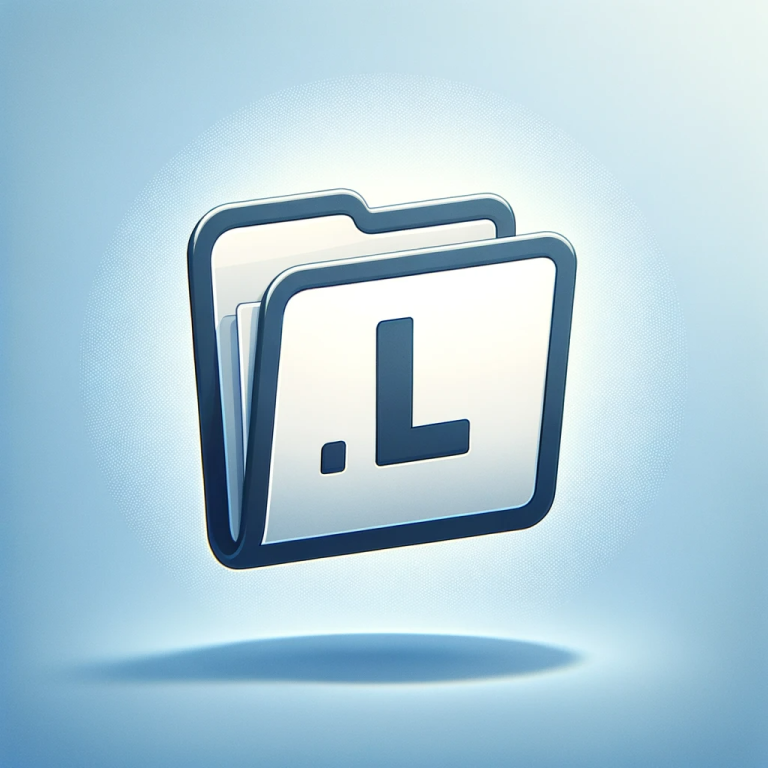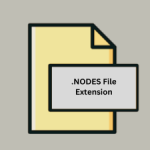.L File Extension

Left Audio Channel File
| Developer | N/A |
| Popularity | |
| Category | Audio Files |
| Format | .L |
| Cross Platform | Update Soon |
What is an L file?
The .L file extension is associated with a specific type of file format that is used in various applications. Files with this extension often contain data in a structured format, which may include code, text, binary data, or other types of information.
More Information.
Initially, .L files might have been created for specific purposes such as script processing, data storage, or configuration settings. Over time, their usage may have expanded or evolved, adapting to new software or technologies.
Origin Of This File.
The origin of the .L file extension can be traced back to specific software applications or programming languages that adopted this extension for their files. The specific origin may vary depending on the application or context in which the .L file is used.
File Structure Technical Specification.
.L files typically have a unique structure, which may be plain text, binary format, or a combination of both. The technical specifications of .L files depend on the application or platform they are associated with. This structure is crucial for the proper interpretation and processing of the file’s contents.
How to Convert the File?
Converting .L files to other formats or accessing their contents across different operating systems can vary depending on the specific nature of the .L file. Here are general guidelines for each platform:
Windows
- Identify the software associated with the .L file. Understanding the origin of the .L file (e.g., which application created it) can guide you to the appropriate conversion method.
- Use conversion tools. If the .L file is a common type (like a script or a text-based file), generic file conversion tools available for Windows might be able to handle it. They can be found online.
- Use specialized software. If the .L file is specific to a particular application, that software might offer a way to export or save the file in a different format.
Linux
- Use command-line tools. Linux offers a variety of command-line tools that can convert files. Tools like sed, awk, or iconv can be helpful if the .L file is text-based.
- If the file is part of a programming or scripting language, you might be able to write a script to parse and convert the file to another format.
- Application-specific methods. As with Windows, if the .L file is associated with a particular application, check if that application provides conversion options within Linux.
Mac
- Use Mac-compatible conversion tools. Similar to Windows, there are file conversion tools available for macOS that might handle .L files.
- AppleScript or Automator. For more automation or scripting-related .L files, you might use AppleScript or Automator to create a workflow for conversion.
- Application-based conversion. If the .L file is linked to a specific Mac application, that application might offer conversion features.
Android
- File conversion apps. There are numerous file conversion apps available on the Google Play Store that might be able to convert .L files to a more accessible format.
- Cloud-based services. Some cloud-based file conversion services can be accessed through a web browser on Android, offering another avenue for conversion.
iOS
- iOS file management apps. Similar to Android, there are apps on the Apple App Store designed for file management and conversion that could potentially handle .L files.
- Use online conversion tools. Accessing an online file conversion service via a browser on an iOS device can be a convenient way to convert .L files when no specific app is available.
Advantages And Disadvantages.
Advantages
- Specialization: The .L file format is often tailored for specific applications or processes, ensuring optimal performance and efficiency in its designated role. This specialization can lead to improved functionality and a better user experience in those specific contexts.
- Compactness and Efficiency: These files are typically designed to be compact, which saves disk space and improves load times. This efficiency is particularly beneficial in applications where speed and resource management are critical.
- Structured Format: .L files usually have a well-defined structure, making them easier to parse and manipulate programmatically. This structure is beneficial for developers and users who need to interact with the file’s data programmatically.
- Integration: In the context of the software that utilizes them, .L files can be seamlessly integrated, allowing for smooth operations within that specific ecosystem.
Disadvantages
- Limited Compatibility: One major drawback is that .L files may not be widely supported across different platforms or software environments. This limited compatibility can pose challenges when sharing files or working in diverse computing environments.
- Dependency on Specific Software: Often, opening or editing .L files requires the specific software they are associated with. If this software is not available or compatible with the user’s system, accessing the file’s content can be challenging.
- Complexity for General Users: Understanding and manipulating .L files might require specialized knowledge or tools. For general users without technical expertise, this complexity can render the files practically inaccessible.
- Risk of Obsolescence: As software and technologies evolve, there’s a risk that the .L file format could become obsolete, especially if it’s tied to specific applications or technologies that are no longer in use.
- Security Risks: If not properly managed, the specialized nature of .L files could pose security risks, especially if they contain executable code or configurations that are critical to the security of a software application.
How to Open L?
Open In Windows
To open .L files in Windows, one typically needs the software associated with the file type. If the software is not known, a text editor may be used to view the file’s contents, though this won’t work for binary .L files.
Open In Linux
In Linux, .L files can be opened with compatible software or viewed using text editors like Vim or Nano. Terminal commands may also be used to inspect the file type.
Open In MAC
On a Mac, similar to Windows and Linux, appropriate software or text editors can be used to open .L files. The “Open With” option is useful for selecting the correct application.
Open In Android
Opening .L files on Android devices might require specific apps that can handle the file format. Users may need to download these apps from the Google Play Store.
Open In IOS
For iOS devices, opening .L files also depends on the availability of compatible apps in the App Store. Sometimes, an additional app may be needed to facilitate the opening of such files.
Open in Others
On other platforms, the approach to opening .L files varies based on the system’s capabilities and the availability of compatible software. Sometimes, it may require specialized software or conversion tools.













